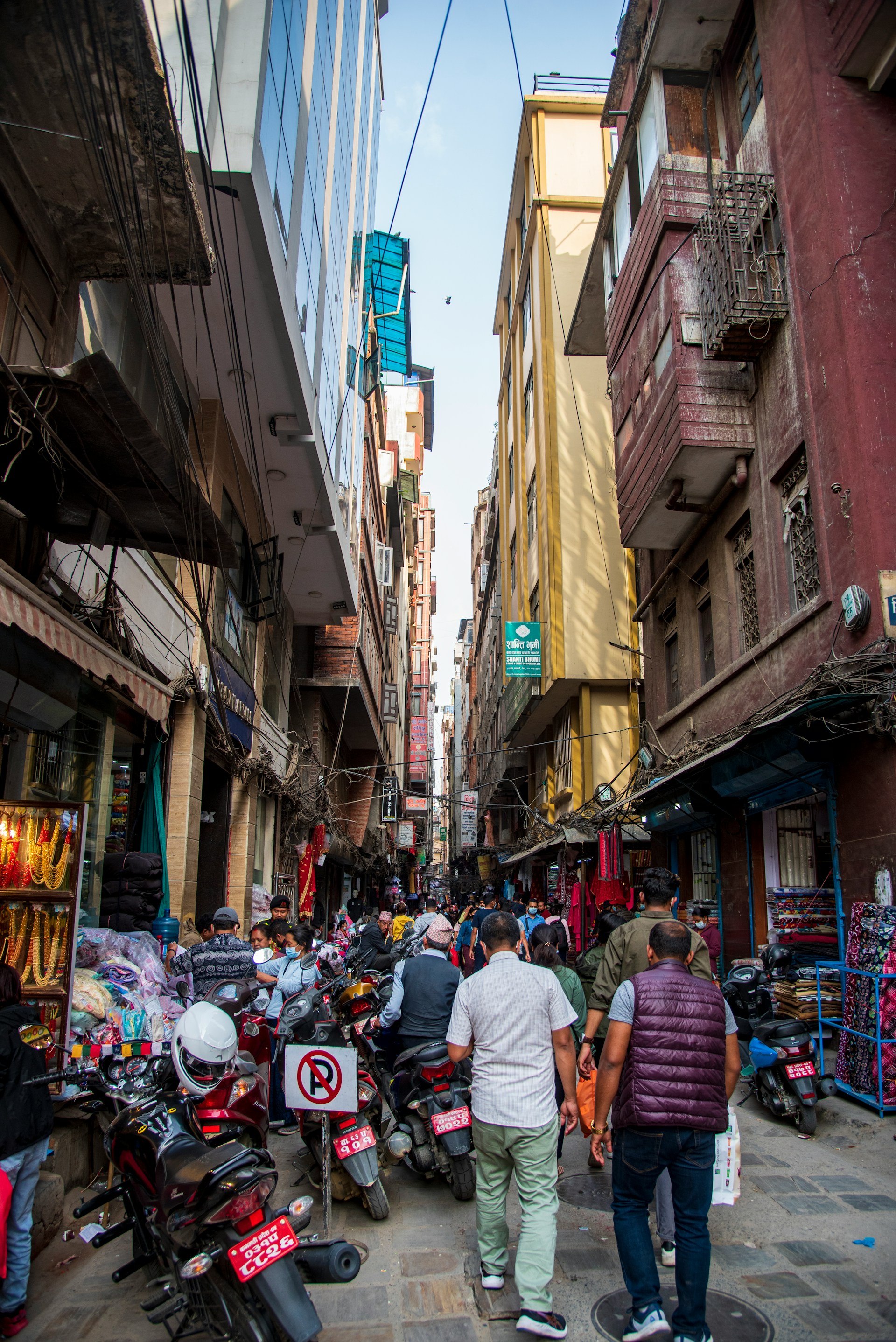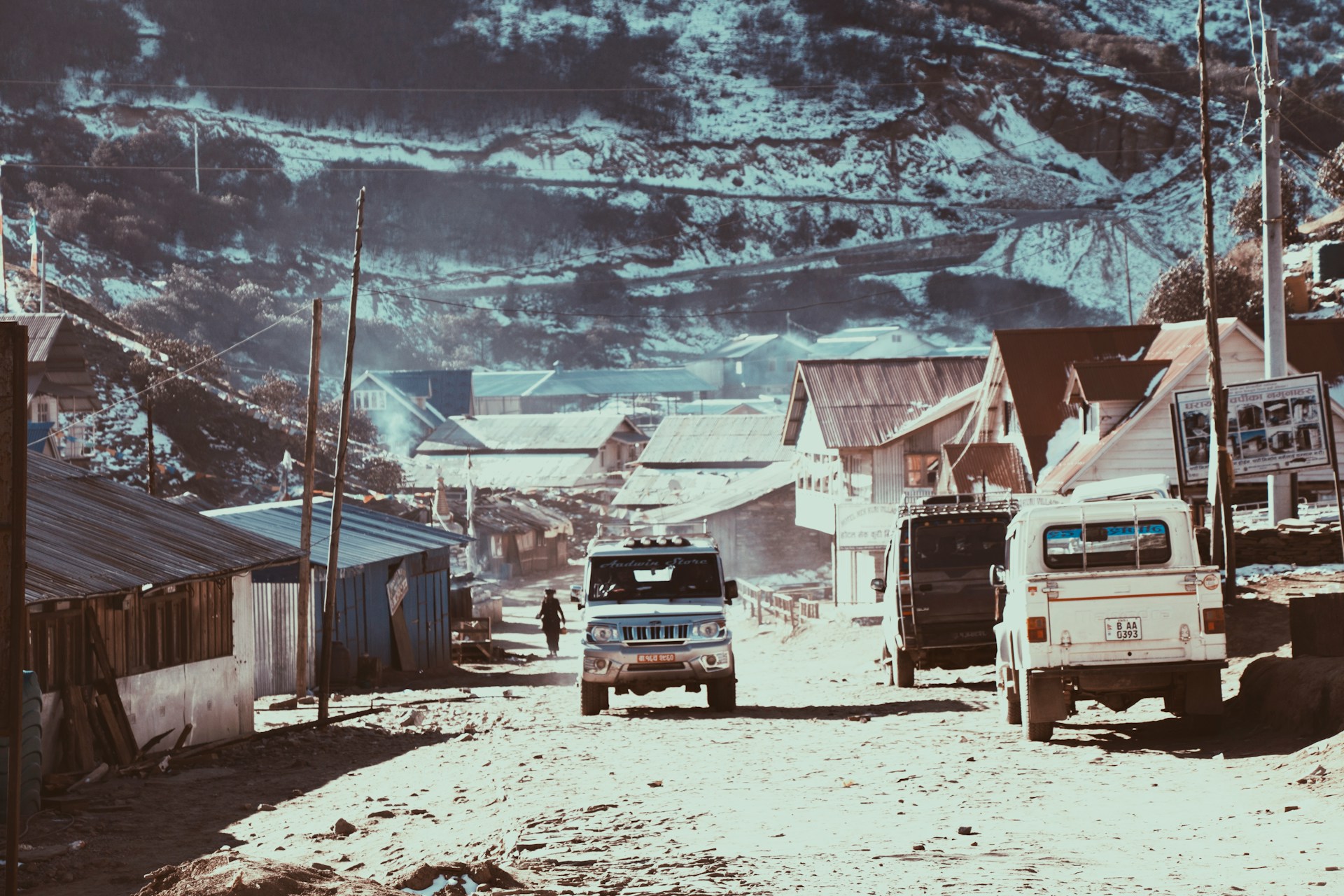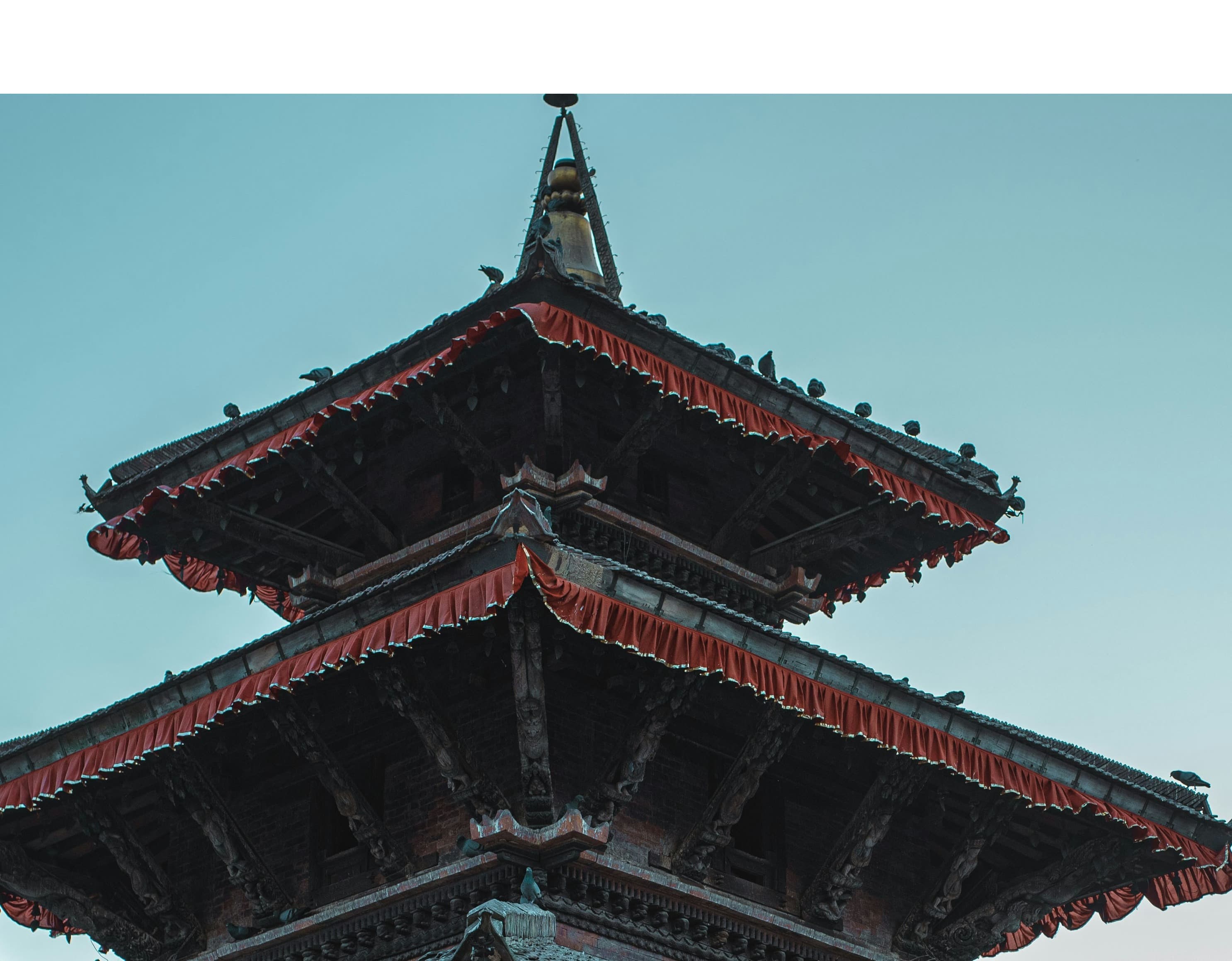Transportation in Nepal brief
Transportation in Nepal is uniquely adapted to its diverse topography, ranging from the bustling urban centers to the remote Himalayan trails. In urban areas like Kathmandu and Pokhara, transportation includes buses, taxis, rickshaws, and increasingly, motorcycles and private vehicles, reflecting a rapid modernization. The more rural and mountainous regions rely on jeeps and buses for road travel, crucial for connecting isolated communities. Air travel, facilitated by airports in major cities and smaller airstrips like those in Lukla and Jomsom, is vital for reaching the most inaccessible areas quickly, though flights are often subject to weather conditions.
Trekking remains a predominant mode of transport in the Himalayas, with paths weaving through stunning landscapes, accessible only on foot or by pack animals such as yaks and mules, essential for carrying supplies. Human porters also play a critical role in supporting trekkers and transport goods in these high-altitude regions. Sustainable travel practices are emphasized to preserve the ecological and cultural integrity of these environments. As Nepal continues to develop, efforts to enhance road connectivity and improve transportation infrastructures are ongoing, aiming to support economic growth while respecting the natural and cultural heritage of the country.
Traveling through the Himalayas in Nepal is a breathtaking experience, deeply embedded in both the physical and cultural landscapes of the region. The Himalayas are not just the backbone of Nepal; they are also the lifeblood of its vibrant trekking tourism. The transportation options in these mountainous terrains are quite distinct from those found in urban areas, being specially adapted to the unique challenges of the high altitudes and rugged paths.
1. By Air:

The journey often begins with a flight to Kathmandu, Nepal’s capital. From there, smaller aircraft transport adventurers to more remote areas like Lukla, known as the gateway to Mount Everest. These flights are not just functional but offer panoramic views of the sprawling Himalayan ranges. However, due to the unpredictable mountain weather, flights can often be delayed or canceled.
2. On Foot:

Once in the mountain regions, trekking is the primary mode of travel. This human-powered transport allows for a slow, immersive experience of the changing landscapes. Trekkers pass through lush rhododendron forests, remote villages, and high-altitude passes. The most famous trekking routes include the Everest Base Camp trek, the Annapurna Circuit, and the trek to Gokyo Lakes. Each path offers a unique perspective on the majestic peaks and the enduring spirit of the local communities.
3. Using Pack Animals:
In areas inaccessible by motor vehicles, pack animals like yaks and mules are crucial. They carry supplies to remote villages and lodges, supporting both local life and the trekking industry. Trekkers often see these animals along the trails, sometimes even having to step aside as a yak train passes.
4. Local Buses and Jeeps:

For regions accessible by roads, local buses and jeeps are common. These vehicles are often packed with both locals and tourists and serve as an economical way to traverse longer distances within the country. Traveling by road can be a thrilling adventure in itself, given the narrow, winding roads that climb steep mountainsides, offering spectacular views—if one dares to look.
5. Human Porters:
Human porters are an integral part of trekking in Nepal. These resilient individuals carry gear and supplies across challenging terrains, enabling trekkers to enjoy their journey without the burden of heavy backpacks. Porters not only provide essential services but also share local knowledge and stories, enriching the trekking experience.
6. Sustainable Travel Practices:
Recognizing the environmental and cultural impacts of tourism, Nepal promotes sustainable travel practices in the Himalayas. Efforts are made to minimize ecological footprints and support local economies. Trekkers are encouraged to follow guidelines such as disposing of waste properly, using water sparingly, and respecting local customs and traditions.
Transporatation in Rural Ares
Transportation in rural areas of Nepal faces numerous challenges due to the country's mountainous terrain and the often remote locations of its villages. The options available are both traditional and innovative, adapting to the geographical and economic constraints of the region.
1. Road Transport: In many rural parts of Nepal, road infrastructure is limited and often in poor condition, especially during the monsoon season when landslides can block roads temporarily. Where roads are available, buses and jeeps are common, serving as the primary means for long-distance travel between villages and towns. These vehicles are typically old and overcrowded but are crucial for connecting remote communities to larger market centers and healthcare facilities.
2. Motorcycles and Bicycles: Motorcycles are increasingly popular in rural Nepal for their ability to navigate narrow and rugged paths where larger vehicles cannot pass. They provide a relatively affordable and flexible means of transport for local residents. Bicycles are also used, especially in less hilly regions, for short-distance travel.

3. Human and Animal Portage: In the more isolated regions, where even motorcycles cannot reach, human porters and pack animals like mules, donkeys, and yaks are vital. They transport goods and supplies across difficult terrains that lack vehicular roads. This mode of transportation is not only traditional but also a critical lifeline for many communities, supporting local economies and ways of life.
4. Suspension Bridges: To facilitate movement across the numerous rivers and gorges, suspension bridges are widespread in Nepal’s rural landscape. These bridges are essential for pedestrians and livestock, often replacing older, more dangerous crossing methods and improving safety and connectivity for isolated areas.
5. Walking: Walking remains the most basic and essential form of transportation in rural Nepal. Many villagers walk several hours to access education, healthcare, and markets, highlighting the need for better transportation solutions in these areas.
6. Micro-Hydropower Ropeways: Innovative transportation methods like micro-hydropower ropeways have been developed in some parts of Nepal. These ropeways use locally generated power to transport agricultural products and goods across steep valleys, reducing the physical burden on residents and increasing the efficiency of moving goods to market.
The government and various NGOs are continually looking for ways to improve rural transportation, recognizing its vital role in economic development and the well-being of remote communities. However, the rugged terrain and limited financial resources pose significant challenges to rapid development.



